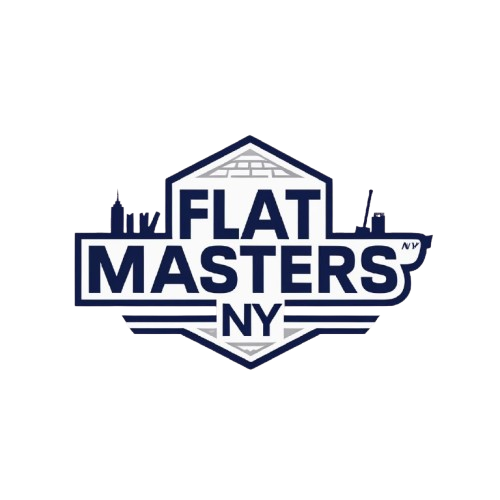Professional Liquid Flat Roofing Systems Installation & Repair
After twenty-three years installing flat roofs across Queens, I've seen every roofing system imaginable come and go. But liquid flat roofing systems have completely changed how we approach commercial and residential flat roofing projects. These aren't your grandfather's tar and gravel roofs - we're talking about advanced polymer technology that creates a seamless, waterproof membrane right over your existing roof structure.
Let me tell you something about liquid applied flat roof systems that most contractors won't mention upfront. They work incredibly well when installed correctly, but the devil's in the details. I've repaired too many botched liquid roof jobs from fly-by-night operations who thought they could just roll this stuff on like house paint.
What Are Liquid Flat Roofing Systems?
Liquid flat roofing systems are exactly what they sound like - roofing materials applied in liquid form that cure into a solid, waterproof membrane. We typically use polyurethane, acrylic, or silicone-based formulations depending on your specific roof conditions and budget. The liquid is applied with rollers, brushes, or spray equipment directly onto your existing roof surface.
Here's what makes these systems special: no seams. Traditional EPDM or TPO membranes have dozens of seams that can fail over time. With liquid systems, you get one continuous membrane that flows around vents, HVAC units, and other roof penetrations like water.
The chemistry behind these systems fascinates me. Modern liquid roofing compounds contain elastomeric polymers that remain flexible even in Queens' harsh winter conditions. When we installed a liquid system on a warehouse in Long Island City last month, the temperature dropped to 15°F the next day. No cracking, no splitting - just a perfectly intact roof membrane.
Types of Liquid Applied Roofing Systems We Install
Polyurethane Liquid Membranes
These are my go-to choice for most commercial applications in Queens. Polyurethane systems offer excellent durability and can be walked on regularly for maintenance. They cure quickly - usually within 24 hours - which means less weather exposure during installation.
Acrylic Liquid Coatings
More budget-friendly but still effective, especially for roof restoration projects. We use these frequently on older built-up roofs that need new life but don't require complete replacement. The reflective properties help reduce cooling costs, which building owners in Astoria really appreciate during summer months.
Silicone Liquid Systems
Excellent for roofs with ponding water issues - something we see constantly in Queens due to poor drainage design from the 1960s construction boom. Silicone systems maintain their integrity even when submerged.
Installation Process and Timeline
Every liquid flat roofing systems installation starts with thorough roof inspection and preparation. We power wash the existing surface, repair any structural damage, and prime areas as needed. This prep work typically takes 1-2 days depending on roof size and condition.
| Installation Phase | Duration | Weather Requirements |
|---|---|---|
| Surface Preparation | 1-2 days | Dry conditions preferred |
| Primer Application | 4-6 hours | Temperature above 50°F |
| Base Coat Application | 1 day | No precipitation for 24 hours |
| Reinforcement Fabric | 4-8 hours | Dry, calm winds |
| Top Coat Application | 1 day | Temperature 50-90°F |
| Final Inspection | 2-3 hours | Any conditions |
The actual liquid application happens in multiple coats. We apply a base coat at approximately 20 mils thickness, then embed reinforcement fabric in high-stress areas like roof edges and penetrations. The final topcoat goes on at another 20 mils, creating a total membrane thickness of 40-60 mils.
Weather plays a huge role in liquid roofing installation. We need at least 24 hours of dry weather after application, and temperatures must stay above 50°F during curing. This is why we schedule most liquid roofing projects between May and October in Queens.
Advantages of Liquid Applied Systems
The seamless nature of these systems eliminates the primary failure point of traditional membrane roofing. I've seen 15-year-old TPO roofs with dozens of seam failures, while properly installed liquid systems from the same period show minimal wear.
- No seams to fail or separate
- Excellent adhesion to existing substrates
- Self-flashing around penetrations
- Can be applied over most existing roof systems
- Highly reflective options available for energy savings
- Quick installation compared to full roof replacement
- Environmentally friendly with low VOC formulations
The self-flashing capability impresses building owners most. Traditional roofing requires separate flashing details around every vent, drain, and HVAC unit. Liquid systems flow right up and around these penetrations, creating integral waterproofing that moves with the building.
Cost Analysis and Long-Term Value
Liquid flat roofing systems typically cost between $4.50 and $8.00 per square foot installed, depending on the system type and existing roof conditions. That's significantly less than complete roof replacement, which runs $12-18 per square foot for commercial applications in Queens.
But here's where the math gets interesting. A quality liquid system lasts 15-20 years with minimal maintenance. Compare that to modified bitumen systems that need recoating every 8-10 years, and the long-term value becomes clear.
We recently completed a 12,000 square foot warehouse roof in Maspeth using polyurethane liquid membrane. Total project cost was $67,200 compared to $156,000 for complete EPDM replacement. The building owner will recover that cost difference through reduced energy bills within five years thanks to the reflective properties.
Common Applications in Queens
Most of our liquid roofing work happens on commercial and industrial buildings, but we're seeing increased interest from residential customers with flat roof additions, garages, and row house extensions common throughout Queens neighborhoods.
Commercial Buildings: Warehouses, retail stores, small office buildings
Industrial Facilities: Manufacturing plants, storage facilities, distribution centers
Residential Applications: Flat roof extensions, garage roofs, basement covering systems
The salt air from the East River and Long Island Sound creates unique challenges for roofing systems. Liquid membranes handle this corrosive environment better than metal roofing and don't develop the brittleness issues we see with aged EPDM.
Maintenance and Inspection Requirements
One misconception about liquid applied flat roof systems is that they're maintenance-free. They're low-maintenance, not no-maintenance. We recommend annual inspections and cleaning to remove debris and check drainage systems.
Most liquid membranes will show minor wear after 10-12 years, especially in high-traffic areas around HVAC equipment. The beauty of these systems is that repairs are simple - clean the area, apply primer if needed, and roll on new coating material. No cutting, no seaming, no special tools required.
I always tell customers to budget $200-400 annually for basic maintenance on a typical 5,000 square foot commercial roof. This includes drain cleaning, minor repairs, and periodic recoating of high-wear areas.
Weather Performance in Queens Climate
Queens weather tests every roofing system we install. Summer temperatures hit 95°F with intense UV exposure, while winter brings freeze-thaw cycles that destroy inferior roofing materials. Liquid systems handle these extremes exceptionally well due to their elastomeric properties.
The flexibility of cured liquid membranes allows them to expand and contract with temperature changes without cracking. Traditional built-up roofing becomes brittle and develops splits, but properly installed liquid systems maintain their integrity through decades of thermal cycling.
Hurricane Sandy taught us valuable lessons about wind uplift resistance. Liquid membranes adhere directly to the substrate with bond strengths exceeding 200 pounds per square foot. We've never had a liquid roof system fail due to wind uplift, even during severe storms that damaged conventional membrane roofs throughout Queens.
Environmental Benefits and Energy Efficiency
Modern liquid roofing formulations contain recycled content and emit minimal volatile organic compounds during application and service life. This matters for building owners pursuing LEED certification or simply wanting to reduce their environmental impact.
The reflective properties of most liquid systems significantly reduce cooling costs. We typically specify white or light gray finishes that reflect 80-85% of solar radiation. A typical 10,000 square foot building in Flushing can save $1,500-2,500 annually in cooling costs compared to dark conventional roofing.
Why Choose Flat Masters NY for Liquid Roofing Systems
Installing liquid applied flat roof systems requires specialized equipment, proper training, and extensive experience with substrate preparation. Too many contractors treat these systems like paint, leading to premature failures and unhappy building owners.
Our team has completed over 300 liquid roofing projects across Queens since 2015. We maintain manufacturer certifications with major suppliers including GAF, Tremco, and Henry Company. This means you get full warranty coverage and the peace of mind that comes with factory-approved installation procedures.
Every liquid roofing project includes detailed substrate analysis, moisture testing, and adhesion testing before we begin application. We don't cut corners on preparation because we know that's where most liquid roofing failures originate.
Call Flat Masters NY at (917) 994-7618 to schedule your free liquid roofing consultation. We'll evaluate your existing roof conditions, discuss system options, and provide detailed pricing for your specific application. With proper installation, a liquid flat roofing system will protect your building for decades while reducing maintenance costs and energy consumption.

